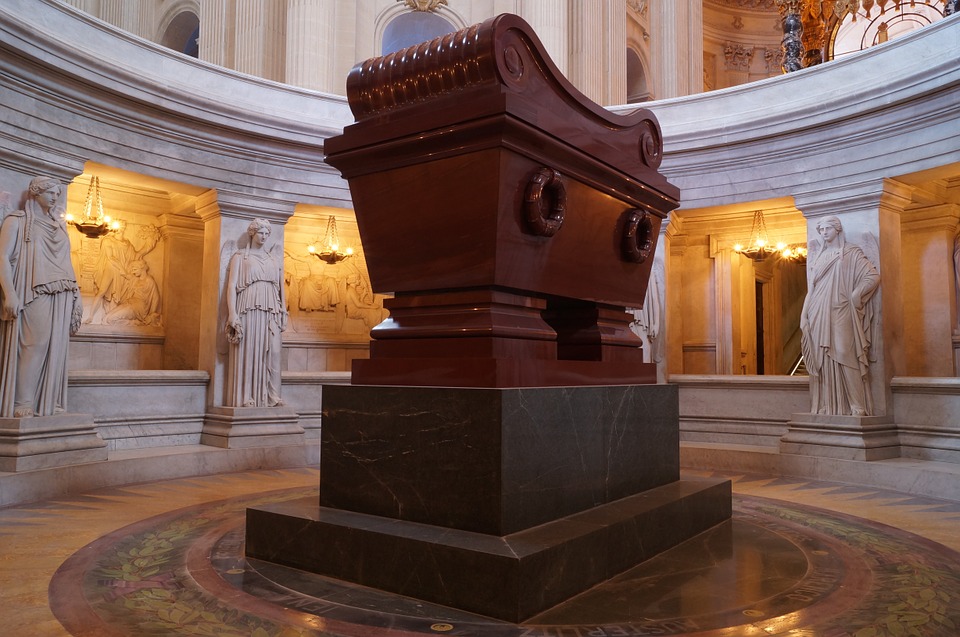Mausoleum

|
| This model represents the Mausoleum at Halicarnassus (near modern-day Bodrum, Turkey). The original structure was destroyed by several earthquakes during the 12th to the 15th centuries. Photo by Jona Lendering, Wikimedia Commons. |
Contents |
[edit] Introduction
A mausoleum is a building containing a stately type of tomb or a room for a tomb. The structure, typically made from stone, is freestanding and acts as an above ground burial chamber for the remains of one person or several people.
In English, the plural, mausoleums and mausolea, are both used.
[edit] History
The term mausoleum originated with the tomb of Mausolus at Halicarnassus, which was considered by Antipater of Sidon as one of the Seven Wonders of the Ancient World. This structure was built between 353 and 350 BC for Mausolus and his spouse, Artemisia (who was also his sister). Artemisia ordered the construction of the shrine for her husband and was interred in the mausoleum with him when she died.
Up until the widespread adoption of Christianity, large mausoleums were constructed for important people or leaders while smaller structures were used by the upper classes. After the rise of Christianity, this method of burial fell out of fashion for hundreds of years, but mausoleums became popular again in early modern times.
In areas susceptible to flooding, such as the American city of New Orleans, Louisiana, the above ground configuration of a mausoleum is considered a more practical burial option. Since it is possible to stack graves within a mausoleum, they are sometimes used in densely populated areas where available land is limited.
[edit] Modern mausoleums
A mausoleum encloses a burial chamber either wholly above ground or within a burial vault below the superstructure. Within the mausoleum is a crypt, which serves as both a memorial to the deceased and a container for the person’s remains.
There are several types of mausoleums
- Public mausoleums for multiple individuals (sometimes hundreds).
- Private (or custom) mausoleums exclusively for families.
- Garden mausoleums situated outdoors.
- Sarcophagus mausoleums which are partially above ground and partially below.
- Vestibule mausoleums designed to look like small houses.
Famous examples of mausoleums include:
Taj Mahal at Agra, India
Pantheon, Rome in Italy
Les Invalides in France
[edit] Related articles on Designing Buildings
Featured articles and news
From studies, to books to a new project, with founder Emma Walshaw.
Types of drawings for building design
Still one of the most popular articles the A-Z of drawings.
Who, or What Does the Building Safety Act Apply To?
From compliance to competence in brief.
The remarkable story of a Highland architect.
Commissioning Responsibilities Framework BG 88/2025
BSRIA guidance on establishing clear roles and responsibilities for commissioning tasks.
An architectural movement to love or hate.
Don’t take British stone for granted
It won’t survive on supplying the heritage sector alone.
The Constructing Excellence Value Toolkit
Driving value-based decision making in construction.
Meet CIOB event in Northern Ireland
Inspiring the next generation of construction talent.
Reasons for using MVHR systems
6 reasons for a whole-house approach to ventilation.
Supplementary Planning Documents, a reminder
As used by the City of London to introduce a Retrofit first policy.
The what, how, why and when of deposit return schemes
Circular economy steps for plastic bottles and cans in England and Northern Ireland draws.
Join forces and share Building Safety knowledge in 2025
Why and how to contribute to the Building Safety Wiki.
Reporting on Payment Practices and Performance Regs
Approved amendment coming into effect 1 March 2025.
A new CIOB TIS on discharging CDM 2015 duties
Practical steps that can be undertaken in the Management of Contractors to discharge the relevant CDM 2015 duties.
Planning for homes by transport hubs
Next steps for infrastructure following the updated NPPF.

























